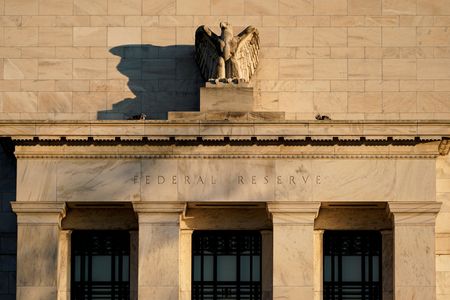
By Howard Schneider
WASHINGTON (Reuters) – U.S. consumer inflation hit another four-decade high in March when it reached 8.5% in large part on gasoline prices surging to a record, but the data sported enough soft spots for some Wall Street pundits to declare “peak inflation” was at hand.
The Federal Reserve certainly hopes it is. Officials there are banking in fact that a long-awaited crest may be here.
Fed Governor Lael Brainard, speaking on the heels of the Consumer Price Index’s release on Tuesday, said the fact that one main measure of the pace of month-to-month inflation slowed in March gave her “confidence that we are going to be successful in achieving” the Fed’s 2% inflation goal.
A drop in used car prices did help bring the so-called core CPI – excluding food and energy costs – to a six-month low. But looked at through a lens other policymakers feel is the appropriate focus – the annual increase in overall inflation – the pace of price increases continues moving up.
In response the central bank has already begun what may prove one of the fastest moves to tighten monetary policy in modern Fed history. If it is forced to become even more aggressive the risks of a mistake – and a recession – will increase.
Recent data on inflation, and of how people think about it, have held little good news for the Fed, though some argue there’s a silver lining. Maybe.
Here’s a look:
PRICE PRESSURES HAVE BROADENED
Inflation began to accelerate last spring, and at first policymakers insisted it was all a temporary shock from the pandemic as government aid payments and the arrival of vaccines created a gusher of demand that crashed against snarled global supply chains. Since then, prices increases have broadened to services as well as goods.
GRAPHIC: Pandemic inflation https://graphics.reuters.com/USA-FED/INFLATION/gkplgqobovb/chart.png
PANDEMIC “LOSERS” REBOUND
Even the industries pounded down early in the pandemic have seen prices accelerate – and it doesn’t take a tangled global supply chain or shipping crisis to make it happen. As quarantines lifted, people started traveling again, booking hotel rooms and going to restaurants. At the same time workers found they had more bargaining power in a tight labor market, and wages rose. Demand and higher operating costs, coupled with consumers ready to spend, are driving prices higher.
GRAPHIC: Changes in contribution to inflation https://graphics.reuters.com/USA-FED/INFLATION/akpezjknmvr/chart.png
BACK TO BASICS
For consumers, inflation was felt first and most pointedly in areas like car prices, where sticker shock over the cost of used cars was a feature of the pandemic.
In recent months necessities like food, shelter and, yes, transportation, have contributed more to the headline pace of price increases.
GRAPHIC: Price of daily life climbs https://graphics.reuters.com/USA-FED/INFLATION/xmvjoqmjwpr/chart.png
EXPECTATIONS REMAIN CONTAINED
The main bit of good news for the Fed is that views about inflation seem to have remain contained – at least over the longer term. Expectations are considered to play an important role in how people set wages and prices, and so far traders in inflation-linked securities appear to believe the Fed will bring inflation back towards the formal 2% target. The fact that the month to month pace of core price increases slowed in March – and fell for core goods – could be a sign that a peak has indeed been reached.
GRAPHIC: ICE inflation expectations index https://graphics.reuters.com/USA-FED/INFLATION/akvezxjwrpr/chart.png
(Reporting by Howard Schneider; Editing by Dan Burns and Chizu Nomiyama)

